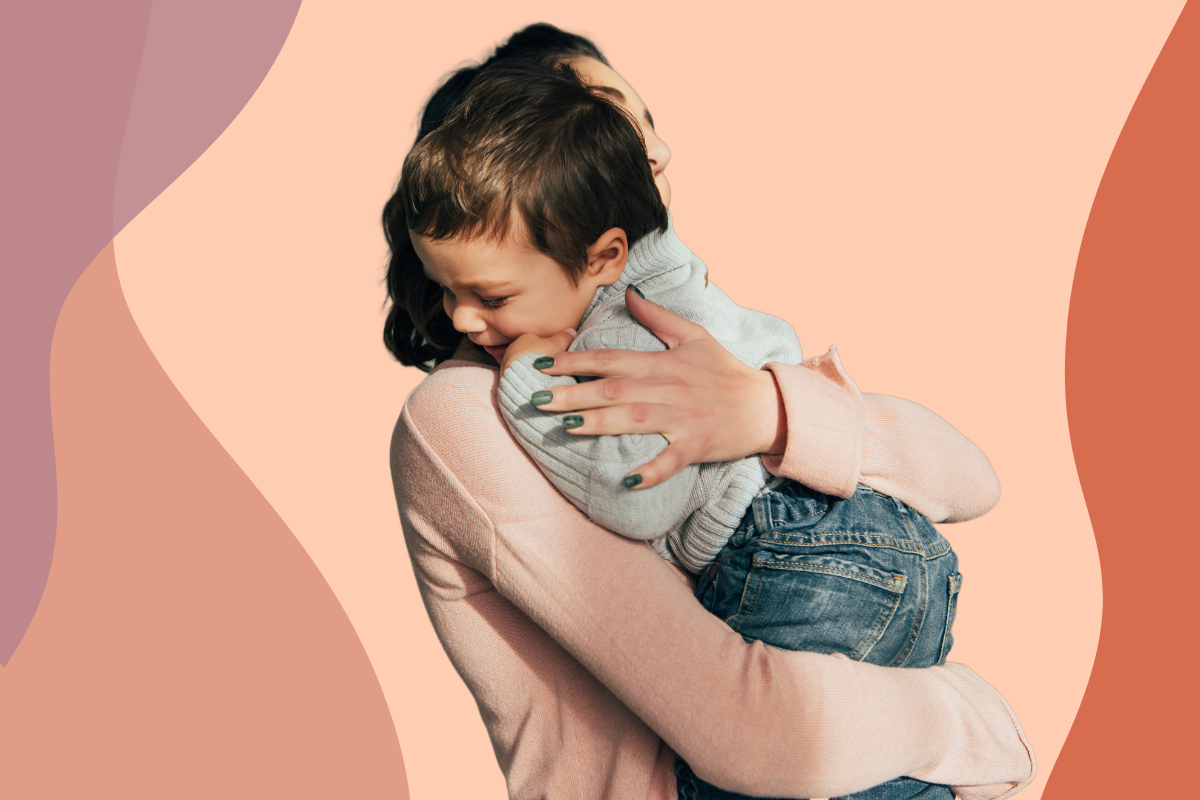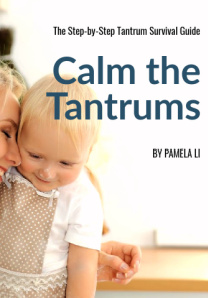How To Draw A Girl Hugging Her Mom
The importance of hugging your child cannot be underestimated. Hugging provides many benefits to people, but is particularly important in child development. Let's discover the science behind the benefits of hugging.
Hugging makes us feel good, no doubt. My child wants to hug all the time.
When we are sad or disappointed, a big warm cuddle can alleviate some of the pain. When we are happy, we want to share the joy by giving others a bear hug. So we intuitively know that hugs and kisses are good.
But there are other benefits besides feeling warm and fuzzy.
Turns out there are important scientific reasons why hugs are good for you and your child. A 20 second hug can help your kid grow smarter, healthier, happier, more resilient and closer to you.
Let's look at the science of hugging.

Benefits of Hugging and the Science Behind Hugs
1. Hugs Help Kids Grow Smarter

Human touches are essential to brain growth.
A young child needs a lot of different sensory stimulation for normal development. Skin contact, or physical touch such as hugging, is one of the most important stimulation required to grow a healthy brain and a strong body 1 .
In Eastern European orphanages, infants are rarely handled or touched. They often spend 22 to 23 hours of the days in their cribs. Propped bottles are used to feed them and care is routinized with minimal human interaction. These children often face many issues including impaired cognitive development 2 and delayed motor skills development 3 .
In a study published in the Genetic Psychology Monographs, researchers found that institutionalized infants who received hugs for an additional 20 min of tactile stimulation (touch) per day for 10 weeks scored higher in developmental assessments than those who didn't 4 . They also found that not all types of touch were beneficial. Only a nurturing touch such as gentle hugging can provide the type of positive stimulation a young brain needs to grow healthily 5,6 .
For more help on calming tantrums, check out this step-by-step guide

2. Hugs Help Kids Grow
Physical contact is also essential to a child's physical growth.
Physicians have found that when children are deprived of physical contact, their bodies stop growing despite normal intake of nutrients. This condition is called failure-to-thrive.
Failure-to-thrive is a type of growth deficiency. The health of children who suffer from failure-to-thrive can be improved when nurturing touches and hugs are provided 7–9 .
One of the reasons why hugging is associated with physical growth is that it triggers the release of oxytocin, also known as the love hormone.
This feel-good hormone has many important effects on our bodies. One of them is growth stimulation.
Studies show that hugging can instantly boost the level of oxytocin. When oxytocin is increased, several growth hormones, such as insulin-like growth factor-I (IGF-1) and nerve growth factor (NGF), are increased as well 10 . As a result, the nurturing touch of a hug enhances a child's growth 11,12 .
3. Hugs Keep Kids Healthy

There are many health benefits of cuddling your baby. Hugs can promote our health and help us heal.
Oxytocin, released when hugging, is a hormone that has amazing power and provides many benefits to our bodies.
For example, the increased level of oxytocin can strengthen our immune systems by lowering the plasma levels of thyroid hormones and decreasing inflammation 13 causing wounds to heal faster 14 . Oxytocin also facilitates social support improving the outcomes of a variety of health related conditions.
4. Hugs Stop Temper Tantrums
Hugs are good for a child's emotional health. Nothing can calm a tantrum-throwing toddler faster than a great big hug from the parent.
Many parents worry that hugging a tantrum-throwing child is rewarding bad behavior with attention. But it is not.
Hugging a child is not the same as giving in (which does encourage bad behavior).
Hugging without giving in is helping a child learn to self-regulate. Regulating one's emotion is like driving a car. In our body, there are two separate mechanisms that control our emotions. The arousal branch in our nervous system speeds up our emotion, while the calming branch can put a brake to our arousal.
Emotion dysregulation happens the arousal branch is overactive and the calming branch is underactive. That means the gas pedal is pressed all the way down while the brake is broken. So, when a child cries intensely, they are driving an emotional runaway car.
A child driving a real runaway car needs to be saved, not ignored or punished by being let to crash. Similarly, a child in an emotion runaway car needs to be saved first.
Hugging can save a child from having an emotional crash. Oxytocin calms down the arousal branch to reduce stress 15 and relieve anxiety. It also activates the calming branch by creating an anti-anxiety effect 16,17 .

5. Hugs Build Resilience

At birth, a child's nervous system is not mature enough to regulate big emotions by themselves. Toddlers having intense emotions have a hard time stopping because of this. They are not being stubborn or defiant.
During distress, high level of cortisol is released circulating through the body and the brain. When left for a prolonged period of time due to a young child's inability to regulate, this toxic level of stress hormone will impact the child's health, both physically and mentally. This is why we should not just let a child go into an emotional crash.
Studies show that excessive exposure to stress hormone can compromise a child's immune system resulting in more illness. Excessive stress affects memory and verbal reasoning capabilities later in life. It can also lead to depression when the child grows up 18 .
Hugging a dysregulated child not only helps them regulate, but it also allows them to experience their emotions being regulated. This crucial early life experience is how a child learns to develop self-regulation skills and build resilience 19 .
Hugging also helps children become more resilient by reducing the negative impact of conflicts.
In one study, researchers from Carnegie Mellon University examined the impact of hugging on conflict exposure. 404 people were interviewed every night for 14 consecutive days about their conflicts and hugs received. They found that when exposed to conflicts, individuals who had more hugs were less upset 20 . Hugs apparently were able to facilitate positive adaptation to these conflicts. The ability to positively adapt to challenges is an important element in building resilience in children.
Also See: How Does The Death Of A Parent Affect A Child
6. Hugs Make Happy Kids
Hugs enhance a person's psychological resources.
Psychological resources, such as optimism, mastery, and self-esteem, refer to individual differences that are directly predictive of physical and psychological health 21 .
Optimism refers to the extent to which people hold favorable expectations about the future. Mastery involves the belief that one can determine one's own behavior, influence one's environment, and bring about desired outcomes. Self-esteem refers to a person's overall evaluation of self-worth.
These three resources are closely interrelated and can buffer the effects of stressful life events. Oxytocin released during hugging bolsters theses resources making a child feel loved 22 and happy in life.
7. Hugs Help Child and Parents Bond

Hugs increase trust 22 . Trust is indispensable in building a strong interpersonal relationship.
Oxytocin increases one's willingness to reduce fear, accept risk and trust the others to improve relationships. It also increase a child's attachment security, leading to secure attachment and improved parent-child bonding 23–25 .
Make this good parenting practice a part of your everyday parenting.
Final Thoughts
Hugging has all kinds of benefits. But respecting body autonomy is also important. Teaching kids how to kindly refuse a hug and handle uncomfortable situations is a good lesson for the child, too.
Next time, give your child a big gentle cuddle, with permission of course, and give them the amazing benefits of hugging and cuddling.
References
-
1.
FELDMAN R, KEREN M, GROSS-ROZVAL O, TYANO S. Mother–Child Touch Patterns in Infant Feeding Disorders: Relation to Maternal, Child, and Environmental Factors. Journal of the American Academy of Child & Adolescent Psychiatry. Published online September 2004:1089-1097. doi:10.1097/01.chi.0000132810.98922.83
-
2.
Johnson AK, Groze V. The Orphaned and Institutionalized Children of Romania. Journal of Emotional and Behavioral Problems. 1994;2:49-52. https://eric.ed.gov/?id=EJ486018
-
3.
ROEBER BJ, TOBER CL, BOLT DM, POLLAK SD. Gross motor development in children adopted from orphanage settings. Developmental Medicine & Child Neurology. Published online March 13, 2012:527-531. doi:10.1111/j.1469-8749.2012.04257.x
-
5.
Field T, Schanberg S, Scafidi F, et al. Tactile/kinesthetic stimulation effects on preterm neonates. Pediatrics. 1986;77(5):654-658. https://www.ncbi.nlm.nih.gov/pubmed/3754633
-
6.
Kuhn CM, Schanberg SM. Responses to maternal separation : mechanisms and mediators. International Journal of Developmental Neuroscience. Published online June 1998:261-270. doi:10.1016/s0736-5748(98)00034-3
-
8.
Frank D, Klass P, Earls F, Eisenberg L. Infants and young children in orphanages: one view from pediatrics and child psychiatry. Pediatrics. 1996;97(4):569-578. https://www.ncbi.nlm.nih.gov/pubmed/8632947
-
9.
POLAN HJ, WARD MJ. Role of the Mother's Touch in Failure to Thrive: A Preliminary Investigation. Journal of the American Academy of Child & Adolescent Psychiatry. Published online October 1994:1098-1105. doi:10.1097/00004583-199410000-00005
-
10.
Petersson M, Lundeberg T, Sohlström A, Wiberg U, Uvnäs-Moberg K. Oxytocin increases the survival of musculocutaneous flaps. Naunyn-Schmiedeberg's Arch Pharmacol. Published online June 24, 1998:701-704. doi:10.1007/pl00005227
-
11.
Feldman R, Eidelman AI. Skin-to-skin contact (Kangaroo Care) accelerates autonomic and neurobehavioural maturation in preterm infants. Developmental Medicine & Child Neurology. Published online February 13, 2007:274-281. doi:10.1111/j.1469-8749.2003.tb00343.x
-
12.
Evoniuk G, Kuhn C, Schanberg S. The effect of tactile stimulation on serum growth hormone and tissue ornithine decarboxylase activity during maternal deprivation in rat pups. Commun Psychopharmacol. 1979;3(5):363-370. https://www.ncbi.nlm.nih.gov/pubmed/548216
-
13.
Smith AS, Wang Z. Salubrious effects of oxytocin on social stress-induced deficits. Hormones and Behavior. Published online March 2012:320-330. doi:10.1016/j.yhbeh.2011.11.010
-
14.
Uvnas-Moberg K, Petersson M. [Oxytocin, a mediator of anti-stress, well-being, social interaction, growth and healing]. Z Psychosom Med Psychother. 2005;51(1):57-80. https://www.ncbi.nlm.nih.gov/pubmed/15834840
-
15.
Cohen S, Janicki-Deverts D, Turner RB, Doyle WJ. Does Hugging Provide Stress-Buffering Social Support? A Study of Susceptibility to Upper Respiratory Infection and Illness. Psychol Sci. Published online December 19, 2014:135-147. doi:10.1177/0956797614559284
-
16.
Weller A, Feldman R. Emotion regulation and touch in infants: the role of cholecystokinin and opioids. Peptides. Published online May 2003:779-788. doi:10.1016/s0196-9781(03)00118-9
-
17.
Light KC, Grewen KM, Amico JA. More frequent partner hugs and higher oxytocin levels are linked to lower blood pressure and heart rate in premenopausal women. Biological Psychology. Published online April 2005:5-21. doi:10.1016/j.biopsycho.2004.11.002
-
18.
Stokes PE. The potential role of excessive cortisol induced by HPA hyperfunction in the pathogenesis of depression. European Neuropsychopharmacology. Published online January 1995:77-82. doi:10.1016/0924-977x(95)00039-r
-
19.
Troy AS, Iris BM. Resilience in the face of stress: emotion regulation as a protective factor. In: Resilience and Mental Health: Challenges across the Lifespan. Vol 1. Cambridge University Press; 2011:30-44.
-
20.
Murphy MLM, Janicki-Deverts D, Cohen S. Receiving a hug is associated with the attenuation of negative mood that occurs on days with interpersonal conflict. Duran ND, ed. PLoS ONE. Published online October 3, 2018:e0203522. doi:10.1371/journal.pone.0203522
-
21.
Hobfoll SE. Social and Psychological Resources and Adaptation. Review of General Psychology. Published online December 2002:307-324. doi:10.1037/1089-2680.6.4.307
-
22.
Saphire-Bernstein S, Way BM, Kim HS, Sherman DK, Taylor SE. Oxytocin receptor gene (OXTR) is related to psychological resources. Proceedings of the National Academy of Sciences. Published online September 6, 2011:15118-15122. doi:10.1073/pnas.1113137108
-
23.
Buchheim A, Heinrichs M, George C, et al. Oxytocin enhances the experience of attachment security. Psychoneuroendocrinology. Published online October 2009:1417-1422. doi:10.1016/j.psyneuen.2009.04.002
-
24.
Kosfeld M, Heinrichs M, Zak PJ, Fischbacher U, Fehr E. Oxytocin increases trust in humans. Nature. Published online June 2005:673-676. doi:10.1038/nature03701
-
25.
Fischer-Shofty M, Shamay-Tsoory SG, Harari H, Levkovitz Y. The effect of intranasal administration of oxytocin on fear recognition. Neuropsychologia. Published online January 2010:179-184. doi:10.1016/j.neuropsychologia.2009.09.003
How To Draw A Girl Hugging Her Mom
Source: https://www.parentingforbrain.com/children-hugging/
Posted by: leclaircamigat.blogspot.com

0 Response to "How To Draw A Girl Hugging Her Mom"
Post a Comment